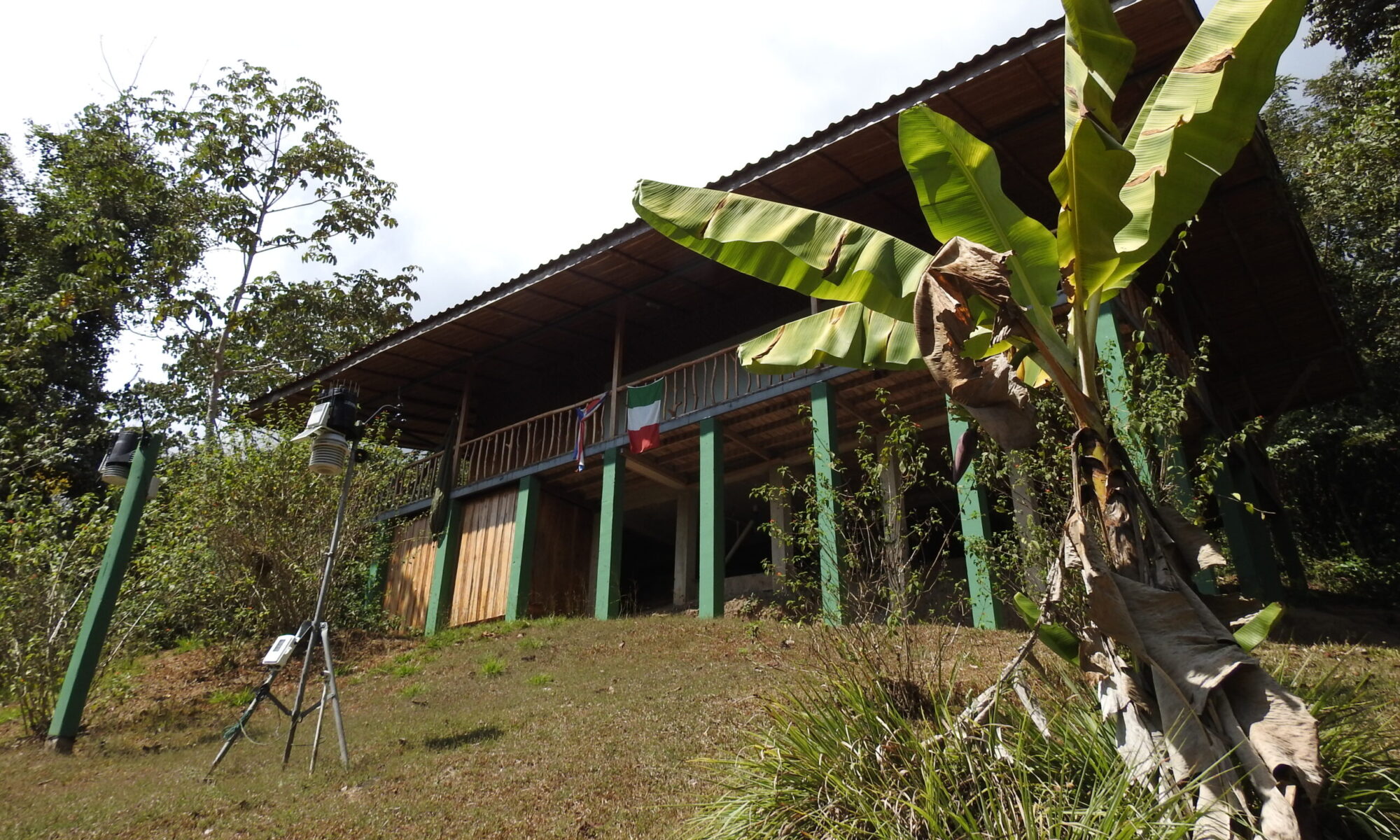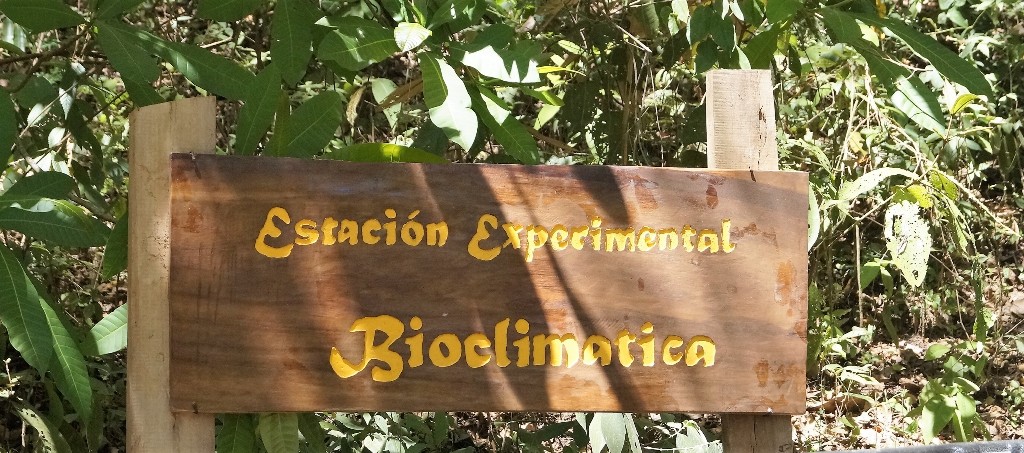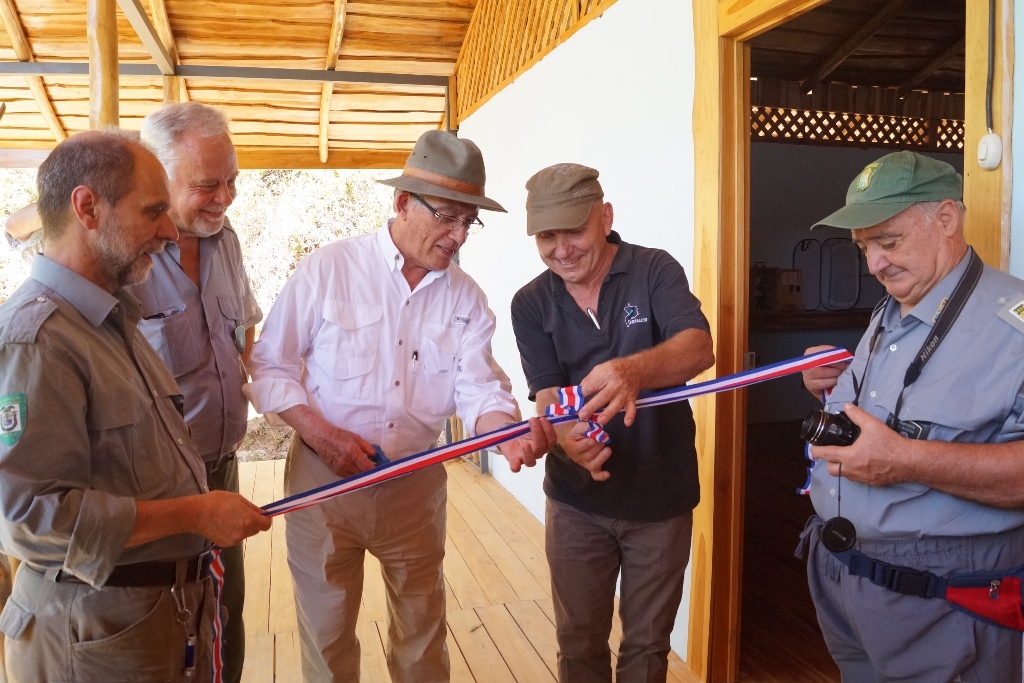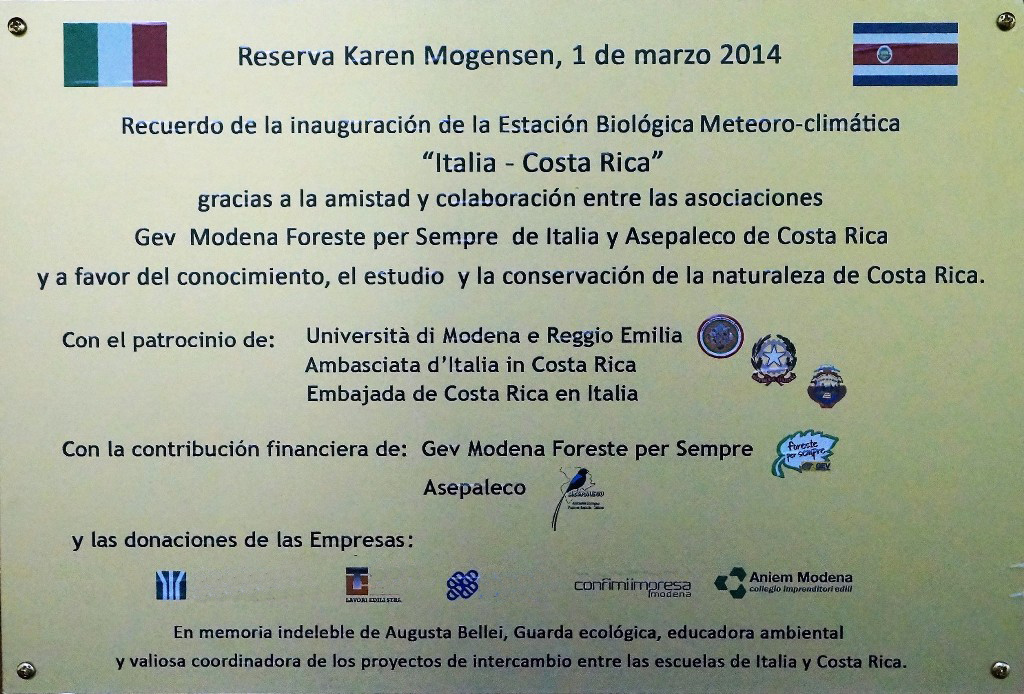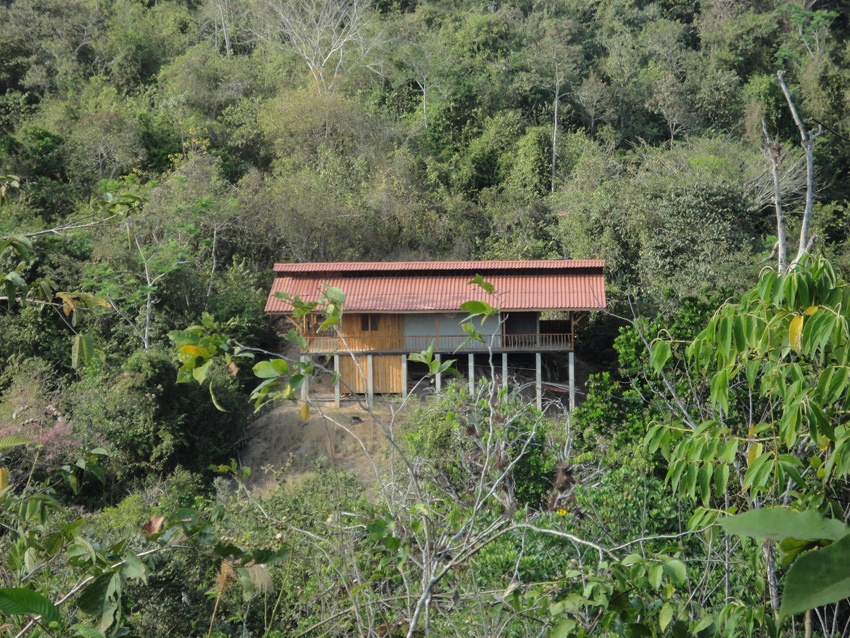Description and purposes of the “Italia Costa Rica” Research Station
The Biological and MeteoClimatic Research Station built in the Karen Mogensen Reserve, which will soon be classified as “Refugio de Vida Silvestre” (Wildlife Refuge), represents the only reality of this type located in the Nicoya Peninsula, in the north-west of Costa Rica. The Reserve extends currently on an area of about 1,000 hectares largely of secondary regeneration forest with some edges of primary forest. The prevailing habitat is the transitional tropical forest, with the presence of both dry and moist forest at the extremes, up to the gallery forest typical of the streams present here.
The Italian Association of Foreste per Sempre ODV (GEV Modena), coordinated for Latin America by the current Scientific Director of the Station Prof. Dario Sonetti, biologist and former professor of the University of Modena and Reggio Emilia, at the time promoted a fundraising between private lenders to support the financial effort necessary to carry out the work, shared with the local Asepaleco association.
The station was inaugurated in 2014 in the presence of the Vice President of the Republic of Costa Rica, dr. Alfio Piva, and obtained official recognition from the local government and its Embassy in Italy, as well as from the Italian Embassy in Costa Rica. At the time of its launch, the project also received official scientific patronage from the University of Modena and Reggio Emilia, which shared the objective of being able to ensure the participation and attendance in the structure of its teachers, researchers and students, although it is offered for use also by Costa Rican research institutions and universities but even at international level.
The station was built by creating a 160-square-meter platform in the forest at an average height of 4 meters above the ground and consists of a laboratory with an attached dehumidified room, an accommodation for researchers with services, an office, a meeting room and a warehouse. It is crossed on the outside by a large balcony that allows a comfortable observation of the forest.
The main objectives that we aim at achieving by using the Research Station are the following:
1. Thanks to the scientific research carried out in the field and in the laboratory, and to the systematic data collection, we aim to achieve in-depth knowledge of the ecosystems present in the Reserve and its rich biodiversity with a constant updating of the species present through the creation of checklists and distribution maps of the taxa detected.
2. Together with biological and ecological studies, meteorological data will be collected systematically and continuously so as to be able to highlight how the climate changes taking place affect the biology of animal and plant species and their interrelationships.
3. Provide the basic conditions so that researchers and students from national and foreign universities but also groups and naturalistic associations interested in knowing and studying the nature of the Karen Mogensen Reserve can take advantage of the necessary services for their stay and activities.
Furthermore, within the scope and purposes of the Station, the following will be included:
a. The possibility of establishing collaborative relationships and synergies at national and international level to develop research and education projects at various levels with education centres, universities and other biological stations.
b. To stimulate the young generations at every level schools and young people belonging to environmental associations of Costa Rica and Italy, the passion for research, for the knowledge of tropical biodiversity and its conservation and protection under the guidance and the collaboration of the permanent staff researchers of the Station.
c. Promote the Karen Mogensen Reserve nationally and internationally, as a centre of research, education and practical knowledge on the web and at the service of local communities.
d. Generate, through the services offered by the Station and Asepaleco, economic resources for the support of the Station and the Association themselves and sources of revenue may be generated even for the conservation and maintaining of the Reserve.
Among the studies and scientific research in the biological and meteoclimatic field that can be achieved thanks to the activity of the Station there are:
i. An increasingly accurate inventory of the Reserve’s animal and plant species, which will be included in the national and international biodiversity lists and whose distribution will be included in digitalised maps (GIS).
ii. The ecological study of the forest environment in the subsequent regeneration phases, in order to identify the functional parameters for restoration aim at encouraging the application of similar actions in other areas.
iii. The calculation of the CO2 absorption of the forest ecosystem aimed at calculating greenhouse gases in line with the methodologies and indications of the IPCC and the application of the Paris Agreement on climate.
iv. The study of the eco-ethology of some indicator species present in the Reserve, able to highlight how climate changes affect biodiversity.
v. The study of organisms whose physiological and biochemical characteristics can present possible applications for the benefit of mankind.
vii. Real-time and long-term monitoring of the weather phenomena in progress and, in perspective, connected to the national meteorological network, will be able to provide support to the local farmers and to the population in relation to forecasting and prevention of the extreme weather events even with the use of webcam and sensors for monitoring clouds, atmospheric phenomena, vegetation and other organisms, with the possibility of on-site archiving and data transmission via internet to national and international research centres.
viii. Finally, the Station will be an important support for teaching, internships and training activities promoted by national and foreign schools and universities, the local population and groups of people on eco-tourist and/or scientific visits. These activities will have an important economic impact on the Reserve itself and its management.
FIELD RESEARCH
– Checklist of the species present in the Reserve
– Study of bioindicator species
– Analysis of the response of target species to meteoclimatic variations
– Tropical meteorology
– Georeferencing of the territory
TARGETS
– Discovery of species / taxa not known for the Reserve or new to science
– Monitoring of the forest ecosystem
– Study of climate change and their effects on biodiversity
– Meteoclimatic characterization of the Reserve
– Analysis of forest carbon flows
COLLABORATIONS for
– BD and MD Theses
– University Masters
– PhD
– Spin off
– Field Schools and ecotourism
– Volunteering in the context of international cooperation
Biological weather station
Italy – Costa Rica
